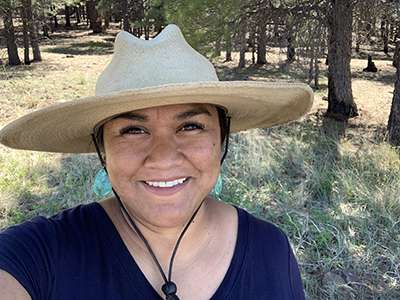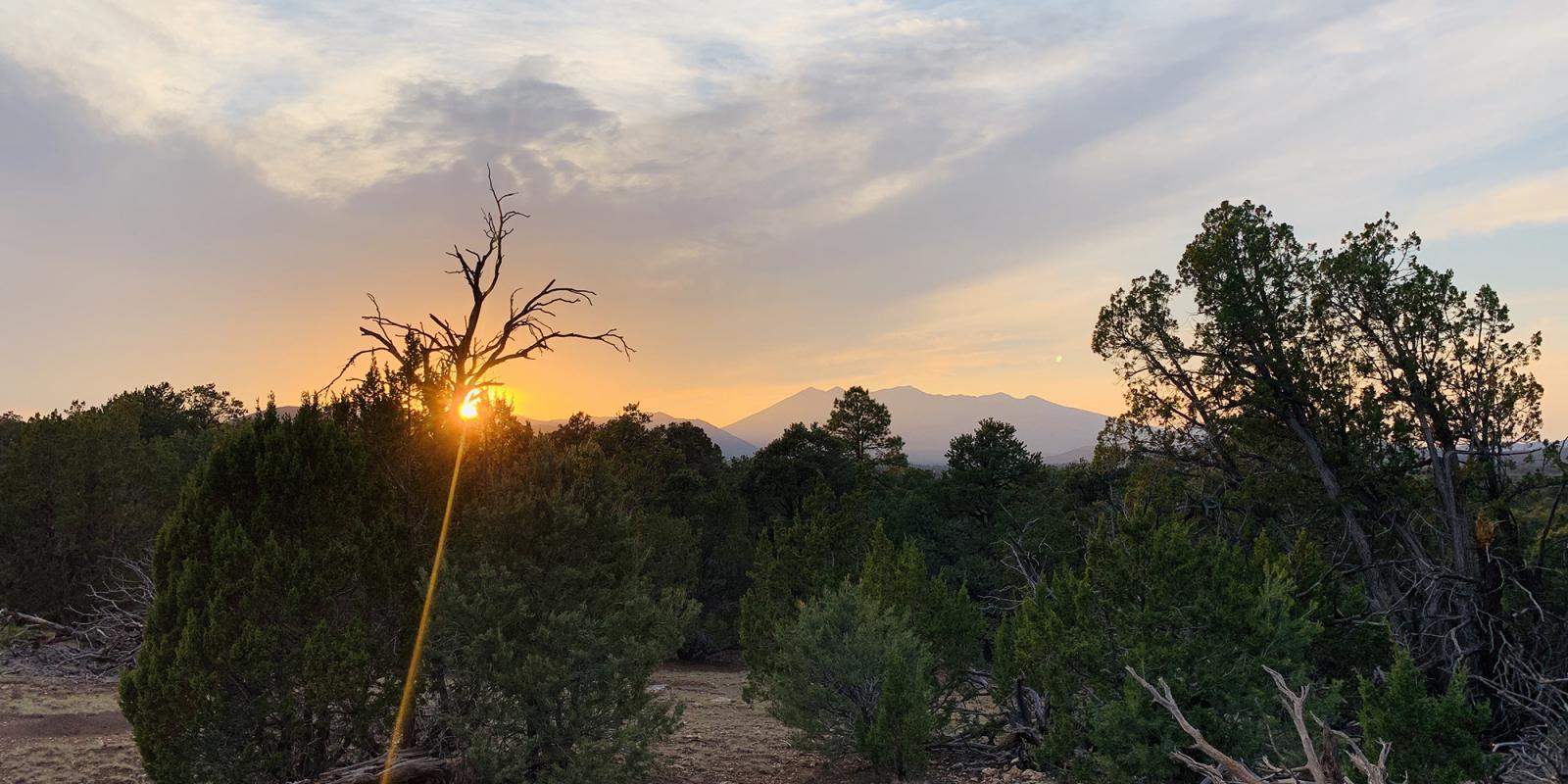
Honor and respect your Elders. This has been and still is a central part of Indigenous culture. It certainly was one of mine growing up on Diné Bikéyah (Navajo Land). Intergenerational teachings are an innate part of life and come in the form of teachings deeply embedded in stories, prayers, medicinal and subsistence foods, ceremonial practices and much more.
Most notably, it is the formative relationship with the natural world that distinguishes Indigenous people from the mainstream, global society focused on capitalism, profits and development. Traditionally, humans are viewed as inferior to the more superior Mother Earth, Father Sky and non-human relatives (i.e., animals and plants).
Despite 1492, Columbus and the eventual land grab of and forced removals and relocations from Indigenous homelands, this viewpoint has remained a strong part of Indigenous culture. The main reason why so many Indigenous traditions, stories and teachings have survived is due to the cultural importance given to passing along teachings to future generations. Our ancestors survived so their teachings and knowledges could survive. They survived so their future generations could thrive and continue to be the caretakers of the natural world.
A Lifetime Spent Learning
For as long as I can remember, I was being taught and I was learning. My education did not take place by sitting at a desk or by reading assigned books and papers, but rather through everyday occurrences and daily social interactions with family. It happened while I was herding sheep, harvesting crops from our fields, cooking, butchering or at a family gathering.
Recently I spoke to my grandmother, who is in her mid-90s, and she eagerly told stories about her younger days, coming-of-age ceremonies for young women and weaving rugs and baskets. She raised me from infancy teaching me the Navajo language and culture. As she spoke, her eyes were bright with enthusiasm and hope for the younger generation, including me, her oldest grandchild.
‘The consistency of these knowledge holders and their teachings has contributed to the survival of Indigenous culture.’
As she spoke, I was transformed back to the 10-year-old me listening to her talk about land and animals. I recall listening to Elders speak during gatherings or ceremonies and I would try to memorize their words. A common theme of these memories was the need to respect our mother the Earth, our father the Sky and our non-human relatives, the animals and plants. The need is more imperative than ever due to increasing human population, mass development, poor, outdated infrastructure and the increasing impacts of climate change.
Warnings of drastic changes in the air, the earth and the waters came long before climate change and global warming were common terms used among academics, researchers, land managers and politicians. Elders spoke of the imbalance and lack of harmony among the five-fingered beings and the natural world.
Growing up in Northern Arizona, I recall the deep snow and monsoons coming on schedule and the heat being bearable. In the past 10 years, it is as though the clouds and winds only bring a reminder of the moisture with which we used to cultivate our field and water our animals. I recall so vividly how the land used to look and feel. But in my short 41 years on this Earth, I have only seen and experienced a fraction of what my Elders have.
The Power and Promise of Indigenous Elders
There is a reason why many Tribal and Indigenous people receive the distinguished title of Elder, although some may deny or display extreme humility in response to hearing it. And there are some who welcome the title because they have earned that right. Elders come in different sizes, genders, backgrounds and ages. One of my relatives, who is actually a couple years younger than I am, has vast knowledge of our language and culture. The wisdom he displays makes him my Elder. If called him this he would probably joke and brush aside the recognition, but only because he is humble. And he will say he has so much more to learn.
I often think of my parents and grandparents who grew up in a time when technology was limited to radio and the occasional vehicle. They were more reliant upon their innate and learned knowledge of living off the land, including the crops they managed to grow. They depended heavily upon their knowledge of navigating traditional calendars based upon the long-term observations of weather and climate.
Some of the fiercest climate warriors are Elders.
These observations turned into knowledge and translated to actions that became second nature; like drinking water to stay hydrated. Today, many educational institutions and organizations offer “experiential” learning to their clients, students and communities. But Indigenous people have been incorporating this practice as a mainstay of their culture since time immemorial. Elders and youth have always collaborated through intergenerational and oral teachings, with Elders being the professors and ultimate knowledge holders.
Elders are a crucial part of the knowledge systems that hold together Indigenous cultures and communities. These knowledge systems are defined as traditional or Indigenous knowledge and there are multiple ways of knowing and doing in each community. The consistency of these knowledge holders and their teachings has contributed to the survival of Indigenous culture through decades of forced relocation, assimilation and racism, and now through climate change.
When we are in the prime of youth, some of us are unappreciative and unaware of the teachings we received from our Elders. As our parents say, it goes in one ear and out the other. It is only when we reach a certain age that we fully come to realize that our Elders were right. They know what they are talking about and what they are trying to teach us so we do not make the same mistakes or go through the trials and tribulations they did.
Lack of Harmony Between Humans and Natural World Needs Turning Around
I know that my Navajo Elders want me to carry on the traditions they learned from their Elders, which include honoring and respecting the Holy People and Navajo deities. A medicine man once told me that the world was imbalanced because the young people were not making their daily offerings and prayers, and this contributed to the imbalance and lack of harmony between the natural world and the five-fingered beings. He told me there was a lack of rain and snow because the Holy People and the natural world were not receiving their nourishment, which come in the form of offerings of corn pollen, white corn and our prayers. He also told me that we are not acknowledging or respecting their non-human relatives, the plants, animals, air and fire. Therefore, the once intimate relationship is fractured and, in some cases, non-existent.
For decades, Indigenous people have advocated on behalf of the environment and their culture. They are called activists but now more commonly referred to as protectors and warriors. Some of the fiercest warriors are Elders, and their message of the need to protect the land, animals, sky and waters have remained consistent. Elders are libraries of knowledge as they have seen decades of progress, challenges and changes to the regional, national and global culture. Climate change has been gradually changing lives and not always for the better.
The Elder libraries contain images, smells and feelings of what used to be and what is here now. Elders should be protected at all costs because without their teachings, we fail to exist as a cohesive society. We fail to exist as Indigenous people.
Nikki Cooley (Diné) is co-manager of the Tribes & Climate Change Program and interim assistant director of the Institute for Tribal Environmental Professionals at the Northern Arizona University Office of Native American Initiatives in Flagstaff, Ariz.
Image (top): The Peaks in Flagstaff or Dook’o’osliid (Navajo); inset, author Nikki Cooley; both photos courtesy of Nikki Cooley.













